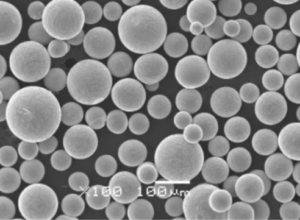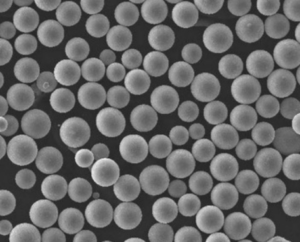Haynes 214 powder is a highly specialized metal powder, known for its exceptional high-temperature oxidation resistance, making it a go-to material for extreme environments. But there’s much more to this remarkable material. In this comprehensive guide, we will delve into everything you need to know about Haynes 214 powder, from its composition, properties, applications, and specifications to a detailed comparison of other similar powders in the industry.
Whether you’re an engineer, a materials scientist, or simply curious about advanced metal alloys, this guide will cover all the essential aspects you need to consider before choosing this product for your next project.
Overview of Haynes 214 Powder
Haynes 214 powder, often referred to as a superalloy, is a nickel-based alloy that shines in high-temperature applications. It’s specially designed to offer high oxidation resistance, which makes it perfect for use in gas turbines, furnaces, and other high-temperature equipment. This alloy combines excellent corrosion resistance with high mechanical strength, a balance that is critical in both industrial and aerospace sectors.
Below is a quick summary of the key aspects of Haynes 214 powder:
| Property | Detail |
|---|---|
| Composition | Nickel (75%), Chromium (16%), Aluminum (4.5%), and more |
| Primary Applications | Gas turbines, industrial furnaces, chemical processing |
| Key Features | Oxidation resistance, thermal stability, strength retention |
| Maximum Operating Temperature | Up to 2200°F (1204°C) |
| Powder Form | Metal powder for 3D printing, thermal spraying, and powder metallurgy |

Composition of Haynes 214 Powder
Understanding the composition of Haynes 214 powder is essential for anyone interested in its performance capabilities. This superalloy is predominantly made from nickel, but it’s the combination with other elements like chromium and aluminum that gives it its unique properties. Let’s break down its composition:
| Element | Percentage |
|---|---|
| Nickel (Ni) | 75% |
| Chromium (Cr) | 16% |
| Aluminum (Al) | 4.5% |
| Iron (Fe) | 3% |
| Other Elements | <1% |
This specific balance of elements ensures that Haynes 214 powder maintains its structural integrity under extreme temperatures, while the aluminum content forms an oxide layer that protects against oxidation.
Characteristics of Haynes 214 Powder
What sets Haynes 214 apart from other metal powders? Its distinctive properties, such as thermal stability and oxidation resistance, make it a preferred choice in many high-temperature industrial applications. Let’s take a look at the defining characteristics of this alloy.
Oxidation Resistance
The standout feature of Haynes 214 powder is its ability to resist oxidation at temperatures as high as 2200°F (1204°C). The aluminum content in the alloy forms a protective oxide layer that prevents further oxidation, keeping the material stable even in harsh environments.
Thermal Stability
High thermal stability is another hallmark of Haynes 214. Unlike other alloys that may weaken or degrade when exposed to extreme heat, this powder retains its strength and mechanical properties under prolonged high-temperature exposure.
Corrosion Resistance
Although not primarily designed for corrosion resistance, Haynes 214 performs well in a variety of environments, particularly in oxidizing atmospheres. This makes it a versatile option for a range of industries beyond high-temperature applications, such as chemical processing.
Mechanical Strength
The nickel-based structure of Haynes 214 ensures that it maintains high mechanical strength even at elevated temperatures. This makes it suitable for structural components in high-temperature systems, providing durability and longevity.
Comparison with Other Metal Powders
When choosing a metal powder, it’s essential to compare the performance of Haynes 214 with other powders available in the market. Here are some of the top contenders:
| Powder Model | Composition | Max Temp. | Strength | Oxidation Resistance | Price |
|---|---|---|---|---|---|
| Haynes 214 | Ni-75%, Cr-16%, Al-4.5% | 2200°F | High | Excellent | $$$ |
| Inconel 625 | Ni-58%, Cr-21.5%, Mo-9% | 2000°F | Moderate | High | $$ |
| Hastelloy X | Ni-47%, Cr-22%, Mo-9%, Fe-18% | 2200°F | High | Good | $$$ |
| Haynes 230 | Ni-57%, Cr-22%, W-14%, Mo-2% | 2100°F | Very High | Excellent | $$$ |
| Inconel 718 | Ni-50%, Cr-19%, Fe-18%, Nb-5% | 1300°F | Moderate | Moderate | $ |
| Nimonic 263 | Ni-50%, Cr-20%, Co-20%, Mo-5% | 1800°F | Moderate | High | $$ |
| Haynes HR-120 | Ni-37%, Fe-37%, Cr-25%, Si-1% | 1800°F | Moderate | Good | $$ |
| Alloy X-750 | Ni-70%, Cr-15%, Fe-7%, Ti-2.5% | 1300°F | High | Moderate | $$ |
| Incoloy 800H | Fe-46%, Ni-32.5%, Cr-21% | 1650°F | Moderate | High | $ |
| Haynes 282 | Ni-57%, Cr-19.5%, Co-10%, Mo-8.5%, Al-1.5% | 1800°F | Very High | Excellent | $$$ |
Each of these metal powders has its own strengths and weaknesses, depending on the application. Haynes 214 stands out for its high-temperature resistance and superior oxidation protection compared to Inconel 625 or Nimonic 263. However, it’s also on the more expensive side, making it more suitable for niche applications where performance is critical.


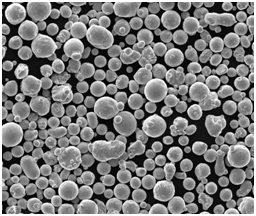


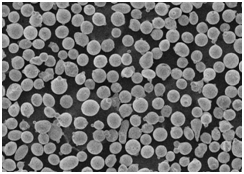
Applications of Haynes 214 Powder
Haynes 214 powder’s versatility allows it to be used in various high-temperature environments across several industries. Below is a breakdown of its common applications.
| Application | Industry | Advantages |
|---|---|---|
| Gas Turbine Components | Aerospace | High strength, oxidation resistance, heat stability |
| Furnace Linings and Hardware | Industrial Heat Processing | Oxidation protection, longevity at high temperatures |
| Combustion Chambers | Power Generation | Excellent thermal stability and oxidation resistance |
| Chemical Processing Equipment | Chemical Engineering | Corrosion and oxidation resistance |
| Heat Exchangers | Power Plants | Retains strength and heat resistance |
| 3D Printing for High-Temp Parts | Additive Manufacturing | Fine powder suitable for precision parts |
Specifications and Standards of Haynes 214 Powder
The specification of Haynes 214 powder is essential when it comes to its application in various industries. Below are the standard sizes, grades, and other specifications of the material.
| Specification | Detail |
|---|---|
| Powder Particle Size | 15-45 microns |
| Manufacturing Standard | ASTM B637 |
| Available Grades | Haynes 214-A, Haynes 214-B |
| Purity | >99% |
| Forms Available | Powder, Wire, Bar, Sheet |
Suppliers and Pricing Details
The price and availability of Haynes 214 powder vary depending on the supplier, quantity, and specific grade needed. Below is a list of suppliers offering Haynes 214 powder.
| Supplier | Region | Price per kg (USD) | Bulk Discounts |
|---|---|---|---|
| Advanced Powders | North America | $150-$200 | Yes |
| Material Solutions | Europe | $180-$230 | Yes |
| PowderTech Global | Asia | $160-$210 | Yes |
| MetalAlloy Supply | Worldwide | $170-$220 | Yes |
| SuperAlloys Ltd. | North America, EU | $150-$210 | Yes |
Prices fluctuate based on market demand and supply chain factors, so it’s important to request up-to-date quotes from multiple suppliers for accurate pricing.
Advantages and Disadvantages of Haynes 214 Powder
While Haynes 214 powder offers many benefits, there are some limitations to consider depending on the specific needs of your project. Here’s a breakdown of its pros and cons.
| Advantages | Disadvantages |
|---|---|
| Excellent oxidation resistance | Higher cost compared to other alloys |
| High thermal stability up to 2200°F | Difficult to machine due to hardness |
| Good mechanical strength at high temperatures | Requires specific heat treatment processes |
| Versatile for both industrial and aerospace | Limited availability in smaller quantities |
| Suitable for additive manufacturing | Potential overkill for low-temp applications |
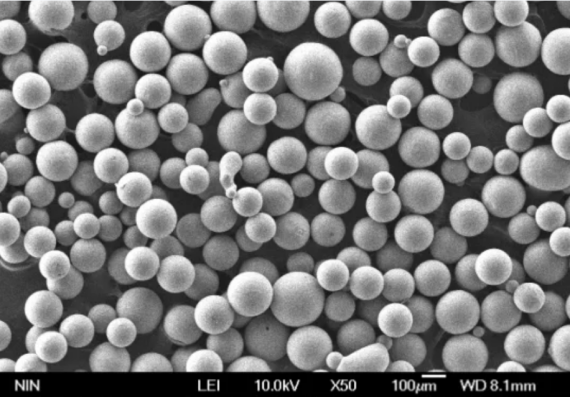
FAQs
Here’s a quick FAQ section to address common questions regarding Haynes 214 powder:
| Question | Answer |
|---|---|
| What is Haynes 214 powder used for? | Haynes 214 powder is used in high-temperature applications like gas turbines and industrial furnaces. |
| What makes Haynes 214 powder special? | It offers superior oxidation resistance and thermal stability compared to other alloys. |
| Is Haynes 214 powder expensive? | Yes, it tends to be more expensive due to its specialized properties. |
| Can it be used in 3D printing? | Yes, it is suitable for additive manufacturing and powder metallurgy. |
| How does it compare to Inconel 625? | Haynes 214 offers better oxidation resistance at higher temperatures than Inconel 625. |
| Is it suitable for chemical processing? | Yes, its corrosion resistance makes it ideal for chemical processing environments. |
Conclusion
Haynes 214 powder is a powerful and versatile material for high-temperature and high-stress applications. Its unique blend of nickel, chromium, and aluminum delivers unmatched oxidation resistance and thermal stability. While it may come at a higher cost, the benefits it provides in extreme environments make it a valuable investment for industries like aerospace, power generation, and chemical processing.
In comparison with other metal powders, such as Inconel 625 or Hastelloy X, Haynes 214 holds its own, especially when high-temperature performance is the key consideration. Understanding the specific applications, advantages, and limitations of this alloy will help guide you toward the right decision for your next project.
